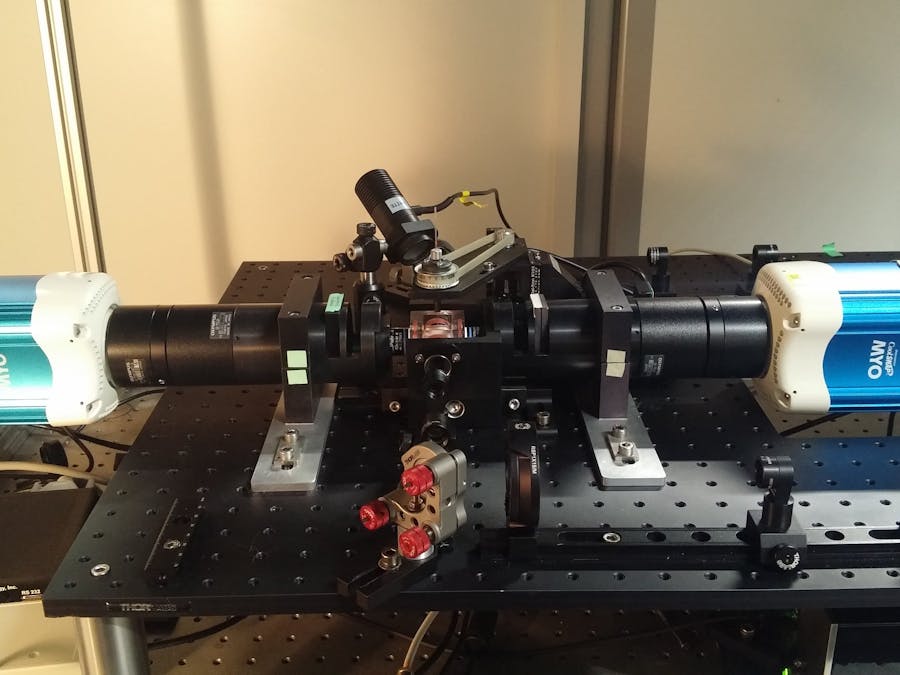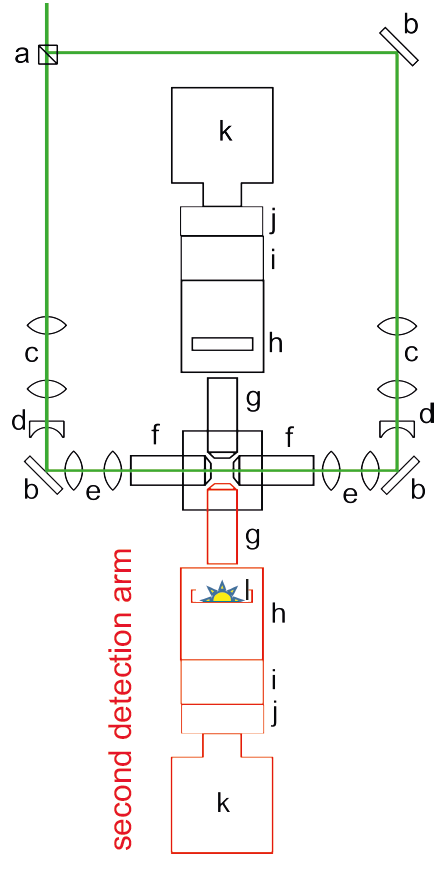We previously constructed a light sheet fluorescence microscope (LSFM) for gentle long-term time lapse imaging of living samples including green micro-algae, aquatic carnivorous plants and developing frog eggs. Our original LSFM setup was based on the OpenSPIM (openspim.org) with some modifications [1, 2]. We subsequently added a second detection objective and camera to enable dual-view imaging.
The Objectives of this project were:
1. to improve the alignment of the two cameras,
2. to provide appropriate illumination for light dependent (photosynthetic) organisms,
3. to design and 3D print robust sample holders customized for different sample sizes.
1.
Adjustable metal feet were attached to the clamps that carry the detection arms. The cameras are part of the detection arm and can be aligned to each other by moving the new metal feet on the bread board.
2.
Photosynthetic samples (e.g.plants, algae) require appropriate illumination during during long-term time lapse recordings in order to maintain normal development and growth. For this a lamp needs to be switched on whenever the laser, that is used to acquire fluorescence images, is switched off. To achieve this the LED driver is triggered by the laser shutter controller via a TTL inverter.
3.
Previously, a makeshift sample holder consisting of a cut off plastic syringe was used. To improve the robustness of the sample positioning we designed 3D-printable holders.Different sample holders were designed for different sample sizes. The sample is embedded in a column of agarose protruding from a glass capillary which is inserted into the sample holder.
References:
[1] P. G.Pitrone, J. Schindelin, L. Stuyvenberg, S. Preibisch, M. Weber, K.W. Eliceiri, J. Huisken, and P. Tomancak, OpenSPIM:An open-access light-sheet microscopy platform, Nat. Methods 10, 598 (2013).
[2] S. Höhn, A.R. Honerkamp-Smith, P.A. Haas, P. KhucTrong, and R.E. Goldstein, Dynamics of a Volvox embryo turning itself insideout, Phys. Rev. Let. 114, 178101 (2015).












Comments
Please log in or sign up to comment.